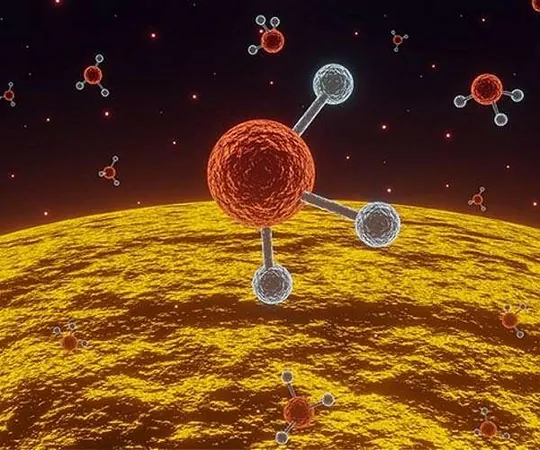
Shocking Study Reveals Higher Risk of Heart Defects in Babies Conceived Through Fertility Treatments!
2024-09-27
Author: Li
Introduction
A groundbreaking study published in the *European Heart Journal* has unveiled a startling statistic: babies conceived through assisted reproductive technology (ART) face a staggering 36% higher risk of major heart defects compared to those conceived naturally. This alarming research sheds light on a critical issue, as congenital heart defects rank as the most prevalent form of birth anomalies and can lead to life-threatening complications.
Study Overview
The Swedish research team, led by Professor Ulla-Britt Wennerholm from the University of Gothenburg, aimed to delve deeper into the health outcomes of children conceived through ART methods such as in vitro fertilization (IVF). Highlighting the previous associations between ART and other risks like preterm birth and low birth weight, the team sought to determine if heart defects also posed a significantly higher risk in this demographic.
Methodology
The extensive study analyzed data from over 7.7 million live births across Denmark, Finland, Norway, and Sweden from 1984 to 2015. Researchers meticulously compared the incidence of heart defects between infants conceived via assisted reproduction and those born through natural conception. They accounted for critical variables like maternal health conditions, age, and lifestyle factors, ensuring that the findings were robust and comprehensive.
Key Findings
The results were striking: the study indicated that the absolute risk of having a major heart defect was 1.84% for babies born after assisted reproduction, compared to 1.15% for those conceived naturally. Notably, the risk escalated even further for multiple births resulting from these fertility treatments, reflecting the unique challenges faced by this particular group.
Expert Insights
Professor Wennerholm emphasized the implications of these findings, stating, “While we have already established that ART babies face higher risks for various birth defects, our study now extends this concern to include congenital heart defects, the leading category of major birth defects.
Underlying Factors
Moreover, the uniformity of risk across different ART methods—be it IVF, intra-cytoplasmic sperm injection (ICSI), or the use of frozen embryos—suggests that underlying factors related to infertility in parents may play a role in the heightened incidence of congenital heart defects in their children.
Further Commentary
Dr. Nathalie Auger, a prominent figure in reproductive medicine from the University of Montreal Hospital Research Centre, echoed these concerns in an accompanying editorial. She noted that while ART has transformed reproductive health, accounting for 2% to 8% of births in various countries, it is essential to recognize the associated risks. “It’s vital for healthcare providers and patients undergoing ART to be aware of these potential complications, enabling earlier diagnosis and intervention,” she urged.
Conclusion
As fertility treatments continue to rise in popularity, experts are calling for increased awareness and proactive healthcare measures to identify and manage congenital heart defects early on. With more families turning to assisted reproduction, the potential for a rise in heart defect cases is a challenge that cannot be ignored.
Stay Informed
Stay informed as we continue to report on this evolving story and its implications for families navigating the complexities of assisted reproduction.


 Brasil (PT)
Brasil (PT)
 Canada (EN)
Canada (EN)
 Chile (ES)
Chile (ES)
 España (ES)
España (ES)
 France (FR)
France (FR)
 Hong Kong (EN)
Hong Kong (EN)
 Italia (IT)
Italia (IT)
 日本 (JA)
日本 (JA)
 Magyarország (HU)
Magyarország (HU)
 Norge (NO)
Norge (NO)
 Polska (PL)
Polska (PL)
 Schweiz (DE)
Schweiz (DE)
 Singapore (EN)
Singapore (EN)
 Sverige (SV)
Sverige (SV)
 Suomi (FI)
Suomi (FI)
 Türkiye (TR)
Türkiye (TR)